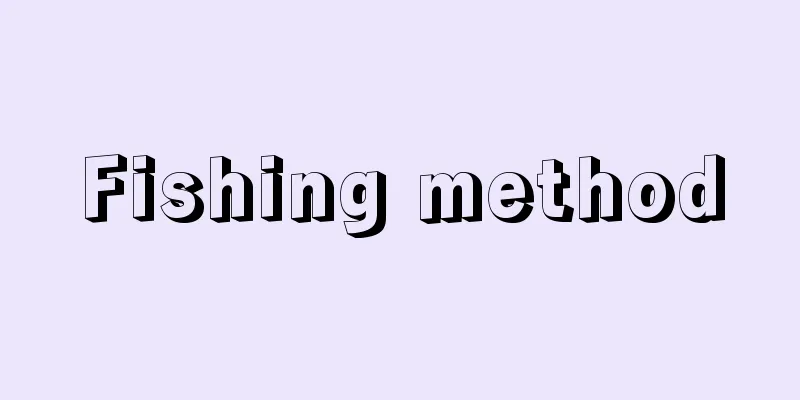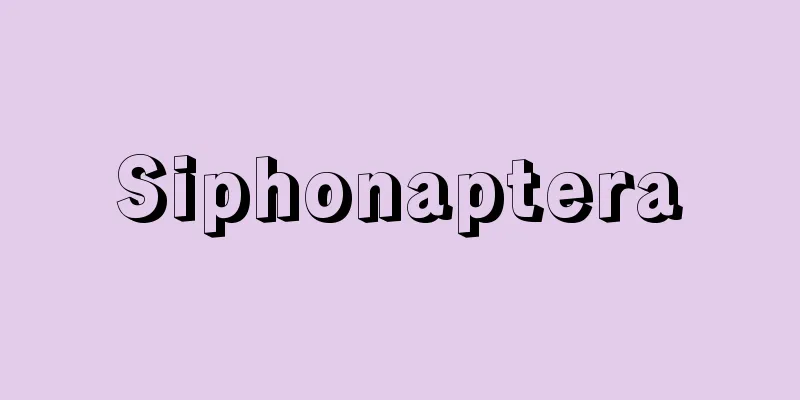Fishing method

|
A method of catching aquatic organisms. In other words, it is a method of fishing, and fishing gear suited to the habits of fish and shellfish is used. Fishing gear can be broadly divided into passive and active fishing methods based on their function. Passive fishing methods involve fixing fishing gear in a certain place and waiting until the target organisms are in a state where they can be caught, and include fixed nets, set nets, gill nets, angling, and trap fishing. Active fishing methods involve actively using fishing gear to catch organisms, and include scoop nets, encirclement nets, seine nets, dragline nets, spear nets, hook pulls, and pincer fishing. These fishing methods may be used alone, or two or three may be combined. There are two methods for searching for fishing grounds: direct and indirect. Direct search involves observing floating objects on the ocean surface, the behavior of seabirds, or using a fish finder. Indirect search involves inferences based on information from other ships, the results of oceanographic observations, or past experience. Other methods include the use of fish-attracting lights and bait to gather schools of fish, attraction methods that use sound waves, blocking the passage of target organisms and guiding them in a certain direction, and aggression methods that gather schools of fish by scaring them off. Thanks to developments in fishing machinery, acoustic equipment, and fishing gear, fishing methods are now more scientific, rational, and labor-saving. [Kiyoshi Yoshiwara] [Reference items] | | |Source: Shogakukan Encyclopedia Nipponica About Encyclopedia Nipponica Information | Legend |
|
水生生物をとる方法。つまり漁獲する方法のことで、魚貝類の習性に対応した漁具が用いられる。漁具はその機能から受動的漁法と能動的漁法に大別することができる。受動的漁法は、漁具を一定の場所に固定して対象生物が漁獲できる状態になるまで待って漁獲する方法で、定置網、敷網、刺網(さしあみ)、釣り、筌(うけ)などがある。能動的漁法は、漁具を積極的に運用して漁獲する方法で、抄(すくい)網、掩(かぶせ)網、巻(旋(まき))網、引網、引縄(ひきなわ)、刺突(しとつ)、鉤引(こういん)、挟把(きょうは)などがある。これらの漁法は単独で行われる場合もあるが、二つないし三つの漁法を組み合わせて行う場合もある。 漁場の探索には、直接探索法と間接探索法がある。直接探索法は、海面の浮遊物や海鳥の行動、あるいは魚群探知機を使用する。間接探索法は、他船の情報や海洋観測の結果、あるいは過去の経験から推察する。そのほか、魚群を集める集魚灯や撒き餌(まきえ)、音波を利用する誘集法や、漁獲対象の生物の通路を遮断し一定の方向へ誘導させる遮断誘導法、魚群を威嚇して集める駆集法などがある。漁労機械、音響機器や漁具材料の発達により、科学的かつ合理的に、しかも省力化した漁法が行われている。 [吉原喜好] [参照項目] | | |出典 小学館 日本大百科全書(ニッポニカ)日本大百科全書(ニッポニカ)について 情報 | 凡例 |
<<: False reports and misinformation
Recommend
Playing - Marbles
A type of game. Players flick shells, pebbles, gla...
Brazilian Plateau - Planalto Brasileiro
A vast area of ancient rocks in the eastern cent...
Barlfoot
A Buddhist ruin in the northern part of Madhya Pra...
Ammonium chloride - Ammonium chloride
...The official name of the fertilizer is ammoniu...
Anketsu Doujin
…His name was Tokuki, his pen name was Kagehiro, ...
Ectopic hormone-producing tumors
(1) Overview of ectopic hormone-secreting tumors D...
Gowon, Y.
...However, immediately after the promulgation of...
Onzaki-sama - Onzaki-sama
...For this reason, in recent years many househol...
Nucleoprotamine
... refers to a complex formed in a cell by the b...
Mole rat (English spelling) African mole rat
Also known as the African mole rat. A general term...
Tanuma clan
His real surname was Fujiwara. He ruled Tanuma, As...
Natural increase - Shizenzoshuu
When compiling a budget, the government estimates ...
Washer - Zagane (English spelling) washer
A part that is placed between a bolt, nut, or smal...
Subodhini (English spelling)
...He later married and had a son, Viṭṭhalanātha,...
Widdringtonia
...The subfamily Cupressaceae includes species su...









